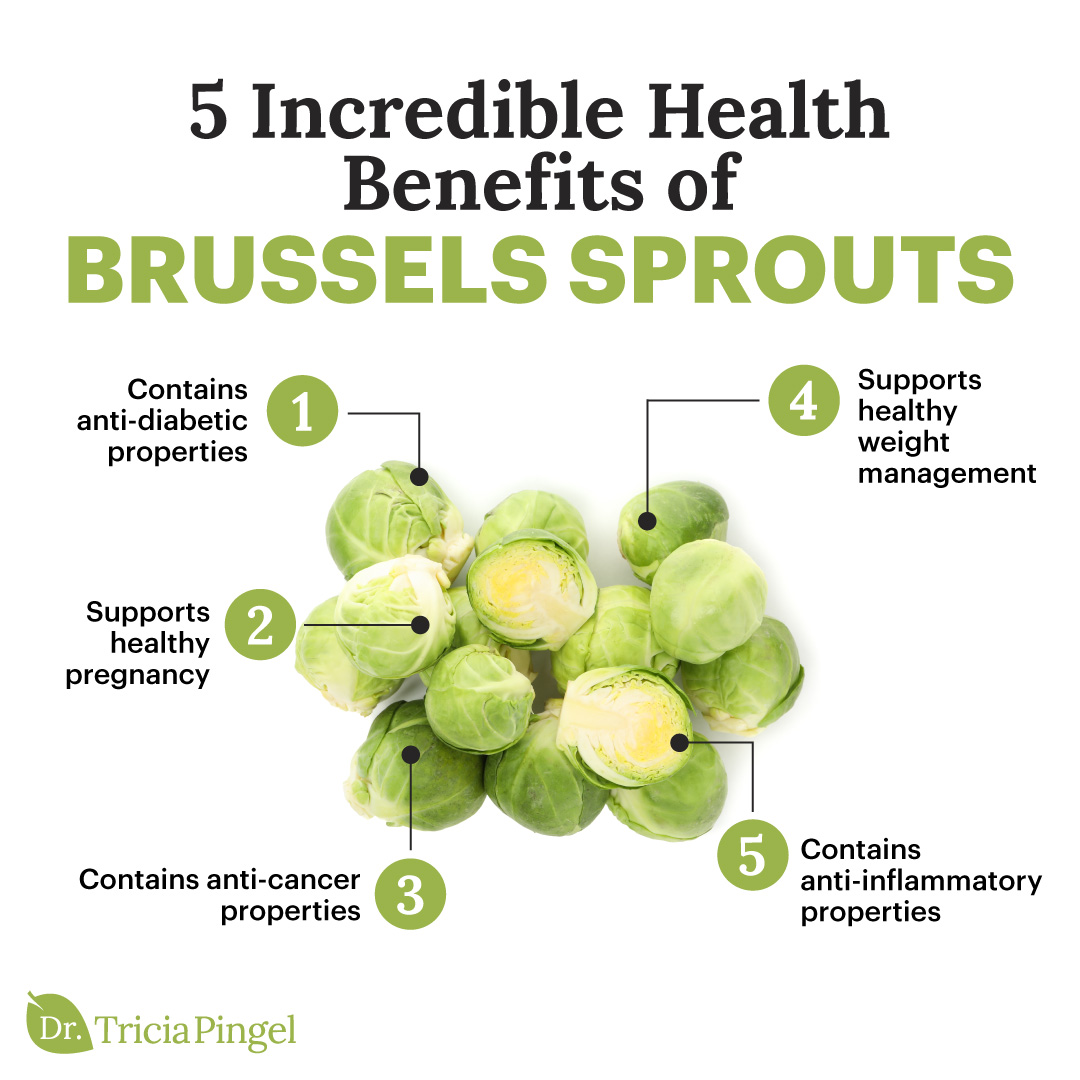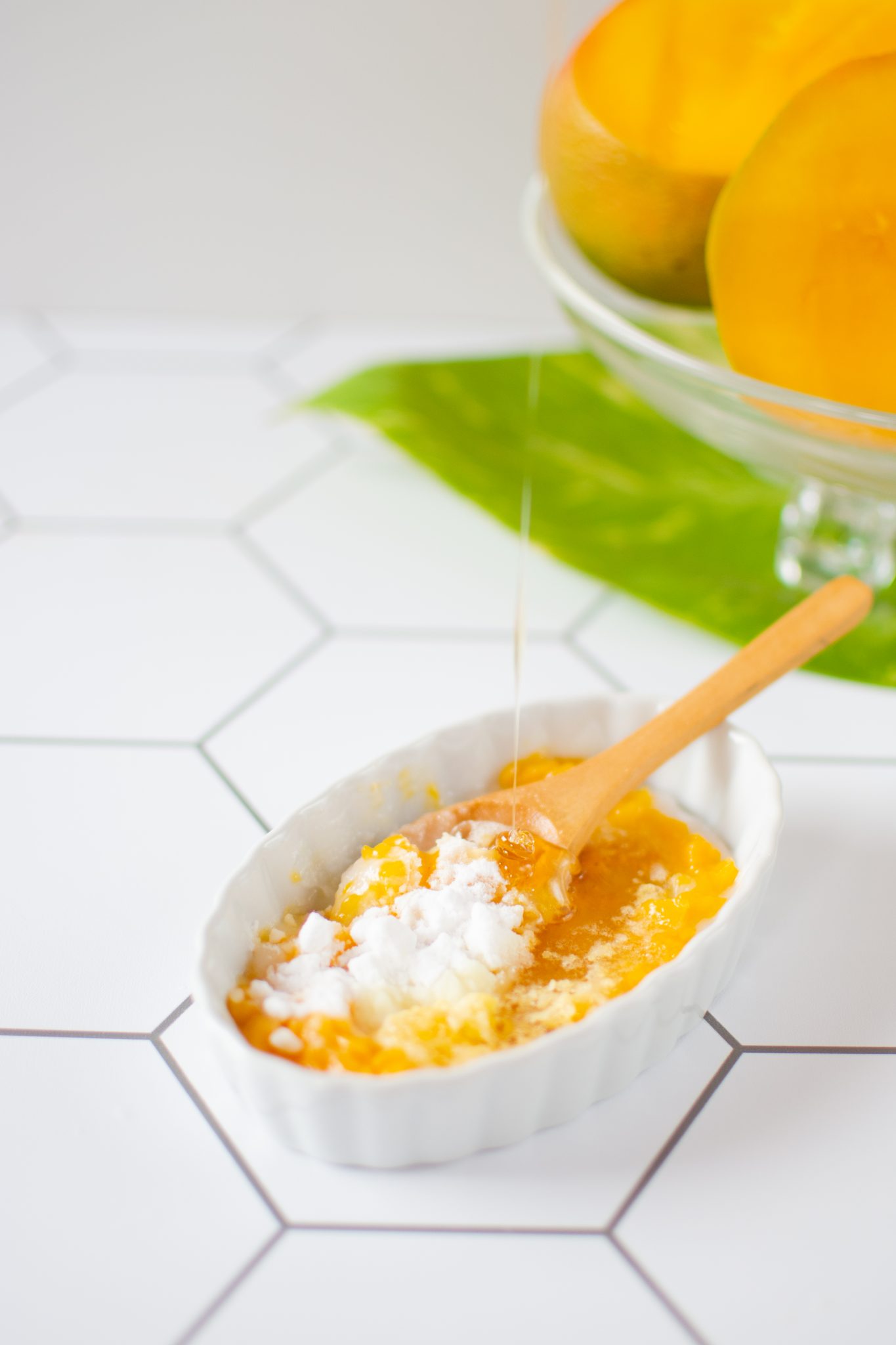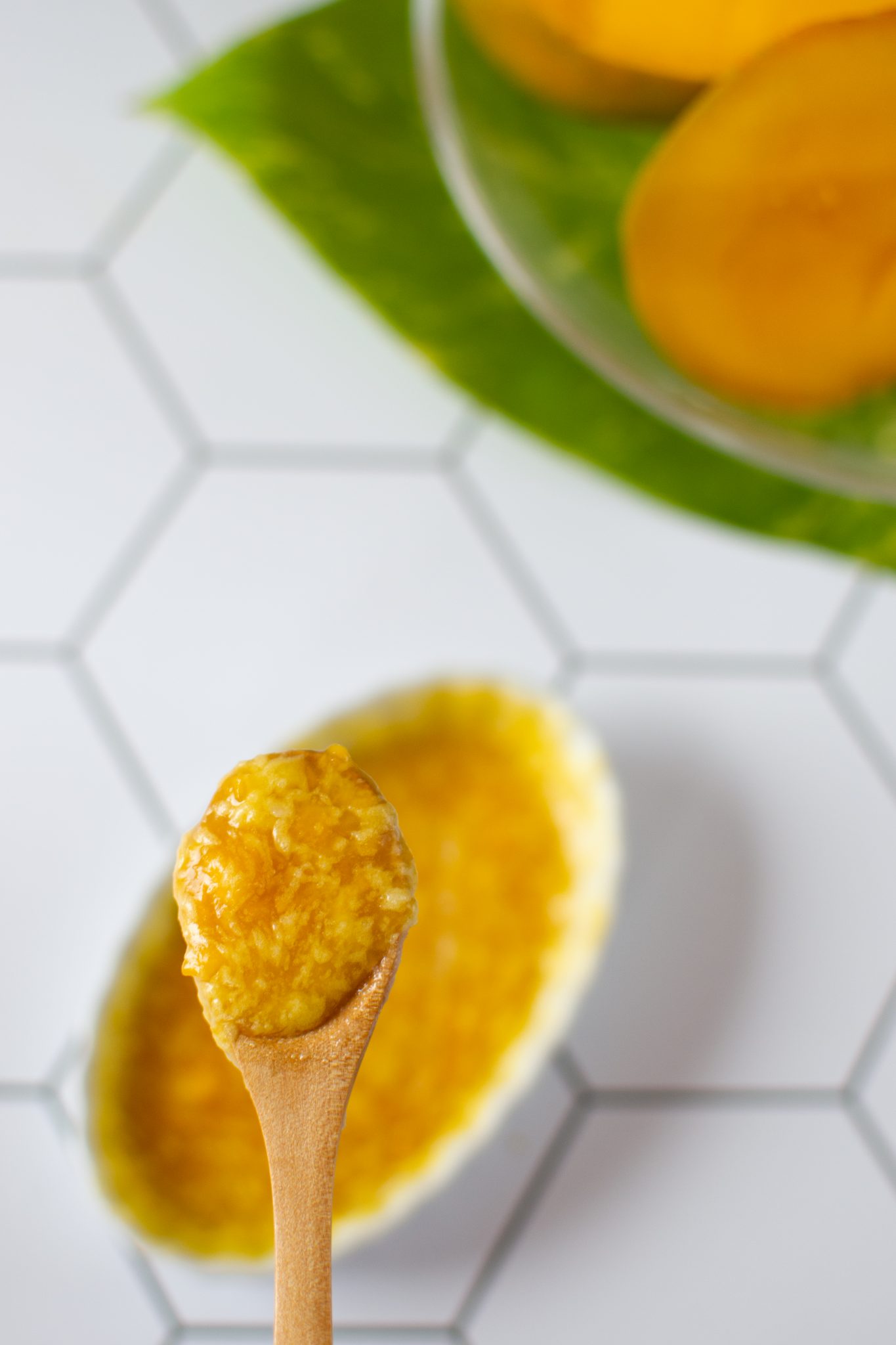Why You Need to Eat Your Brussels Sprouts (5 Brussels Sprouts Benefits)
Brussels sprouts tend to get a bad rap in the taste department, but the truth of the matter is that they can actually be incredibly delicious when prepared the right ways. Plus, Brussels sprouts benefits your health in so many amazing ways.
From fighting diabetes to supporting healthy pregnancies and even supporting healthy weight management, eating Brussels sprouts is a great way to support your overall health.
So, let’s take a look at what gives Brussels sprouts their incredible benefits and exactly how they support your health in so many ways. I’ll even share some of my favorite ways to prepare them!
What Makes Brussels Sprouts So Healthy?
First of all, Brussels sprouts are classified as a cruciferous vegetable. This is important because cruciferous vegetables are known to be high in nutrients and are popular for their cancer-fighting properties.
Specifically, Brussels sprouts are high in fiber, several minerals, and vitamins. And they’re especially high in vitamins K and C, which are known to support the health of your immune system, bones, and even your skin. [1]
They’re also rich in antioxidants, which are known to fight the free radicals that cause oxidative stress. And because oxidative stress has been shown to cause many chronic diseases, consuming Brussels sprouts on a regular basis can help to keep harmful health conditions at bay.
But that’s not all. Brussels sprouts benefits extend beyond fighting off diseases and include some surprising health perks as well. Keep reading to learn more about some of the interesting Brussels sprouts benefits discovered by the scientific community.
The Top 5 Brussels Sprouts Benefits
Here are five of the top Brussels sprouts benefits.
1. Contains anti-diabetic properties
With type 2 diabetes on the rise, one of the most promising Brussels sprouts benefits is that they are known to contain anti-diabetic properties.
Brussels sprouts are a great source of alpha lipoic acid (ALA), which has been shown to help lower blood sugar levels and improve insulin sensitivity in people with diabetes by fighting oxidative stress in the body.
In fact, according to numerous studies, ALA has the ability to reduce waist circumference, body fat, and markers of oxidative stress in type 2 diabetic patients. [2]
According to a 2016 meta-analysis, the more berries and vegetables you eat (specifically cruciferous vegetables such as Brussels sprouts along with green leafy vegetables and yellow vegetables), the lower your risk of type 2 diabetes. This was largely credited to the high fiber content of these foods. [3]
Another meta-analysis also found that while consuming citrus fruits did not lower the risk of developing type 2 diabetes, consuming cruciferous vegetables was shown to help protect people against the development of type 2 diabetes. [4]
2. Supports healthy pregnancy
If you’ve ever been pregnant, you know that folic acid is one supplement that’s on the “must take” list from your doctor. And there’s a great reason for this: Folic acid is essential for a fetus’ neural tube development, which is responsible for brain and spinal health.
Did you know that consuming folate-rich vegetables in addition to your prenatal vitamins can help to support a healthy pregnancy by helping to prevent birth defects? [5] Well, believe it or not, Brussels sprouts are rich in folate!
Interestingly, studies have shown that consuming lots of vegetables over a long period of time is shown to improve folate status during pregnancy. [6] This shows that consuming folate-rich foods such as Brussels sprouts is key for optimizing your folate status before and during pregnancy.
3. Contains anti-cancer properties
Some of the biggest Brussels sprouts benefits come from the fact that it contains glucosinolate, which are plant-based compounds that act as natural detoxifiers. As a result, they’re linked to reduced cancer risk! But just how effective are Brussels sprouts in helping to prevent cancer?
According to a study on 10 healthy non-smoking adults, consuming Brussels sprouts was found to decrease the risk of colorectal cancer.
The researchers divided the participants into two groups: One group consumed 300 grams of cooked Brussels sprouts each day while the other group ate a glucosinolate-free diet for two weeks, with a check in at the one-week mark.
At the end of each week, the researchers took blood samples and duodenal and rectal biopsies. Amazingly, they discovered that those who consumed the Brussels sprouts had 30 percent higher levels of glutathione S-transferase (a detoxification enzyme) after one week and 15 percent higher activity the second week than those who didn’t consume glucosinolate.
As a result, the researchers surmised that the enhanced detoxification enzyme levels may help explain the link between greater consumption of glucosinolate-rich vegetables such as Brussels sprouts and a decreased risk of developing colorectal cancer. [7]
Another study found that consuming Brussels sprouts daily for three weeks can reduce damage to your DNA from oxidative stress by 28 percent! Just as in the study above, the researchers also fed volunteers 300 grams of Brussels sprouts each day. However, the period lasted for three weeks.
After testing the urine of the participants, the researchers stated that, due to the decreased damage to DNA, they believed consuming cruciferous vegetables could decrease cancer risk. [8]

4. Supports healthy weight management
Due to their high fiber content, Brussels sprouts benefits also include supporting healthy weight management. And several studies have shown the connection between consuming highly fibrous foods and a smaller waistline.
In fact, one study revealed that consuming 14 grams of fiber daily for more than two days was associated with a 10-percent decrease in calorie intake and a weight loss of more than four pounds in less than four months!
Moreover, those results were even more incredible in overweight and obese volunteers. The researchers found that mean caloric intake was reduced by 18 percent and weight loss was increased to about 5.3 pounds! [9]
5. Contains anti-inflammatory properties
One of the final top Brussels sprouts benefits is their ability to fight inflammation. And, given their link to reduced cancer risk (and the fact that cancer is linked in inflammation), this probably isn’t a huge surprise.
What may be a surprise, however, is just how effective Brussels sprouts can be for reducing inflammation. In a 2014 study, researchers evaluated the link between consuming cruciferous vegetables and inflammatory and oxidative stress markers in more than 1,000 women.
Interestingly, they found that certain inflammatory markers were lower in women with the highest intakes of cruciferous vegetables. Specifically, those with the highest intakes had up to 24.68% less inflammation than those who consumed the least cruciferous vegetables! [10]

How to Eat Brussels Sprouts (And Love It!)
I often find that if people don’t like the taste of Brussels sprouts, they just haven’t found their preferred preparation of this tasty vegetable! When cooked properly, they have a nutty, almost sweet flavor.
One of the simplest and most delicious ways to cook Brussels sprouts is to roast them in the oven. Just rinse, slice in half, and toss with some oil, sea salt, pepper, and perhaps a small bit of fresh lemon juice.
I like to roast them at about 400 degrees for 25 to 30 minutes and serve immediately. Alternatively, if you’re looking for other preparation ideas, you may enjoy these Maple Balsamic Brussels Sprouts or even “hide” them in this Turkey Shepherd’s Pie.
Regardless of your taste preferences, there’s a dish with Brussels sprouts that you’re bound to love as much as you’ll love the health benefits you’ll reap!
Key Takeaways
- Even though Brussels sprouts tend to get a bad rap for taste, when prepared appropriately, they can be quite delicious.
- It's worth adding them to your diet on a regular basis simply for all the Brussels sprouts benefits, including: containing anti-diabetic properties, supporting healthy pregnancy, containing anti-cancer properties, supporting healthy weight management, and containing anti-inflammatory properties.
- If you're interested in trying new ways to cook Brussels sprouts, check out some of the recipes linked above. Keep searching for ways to prep them that help you to enjoy their rich nutty flavor.







